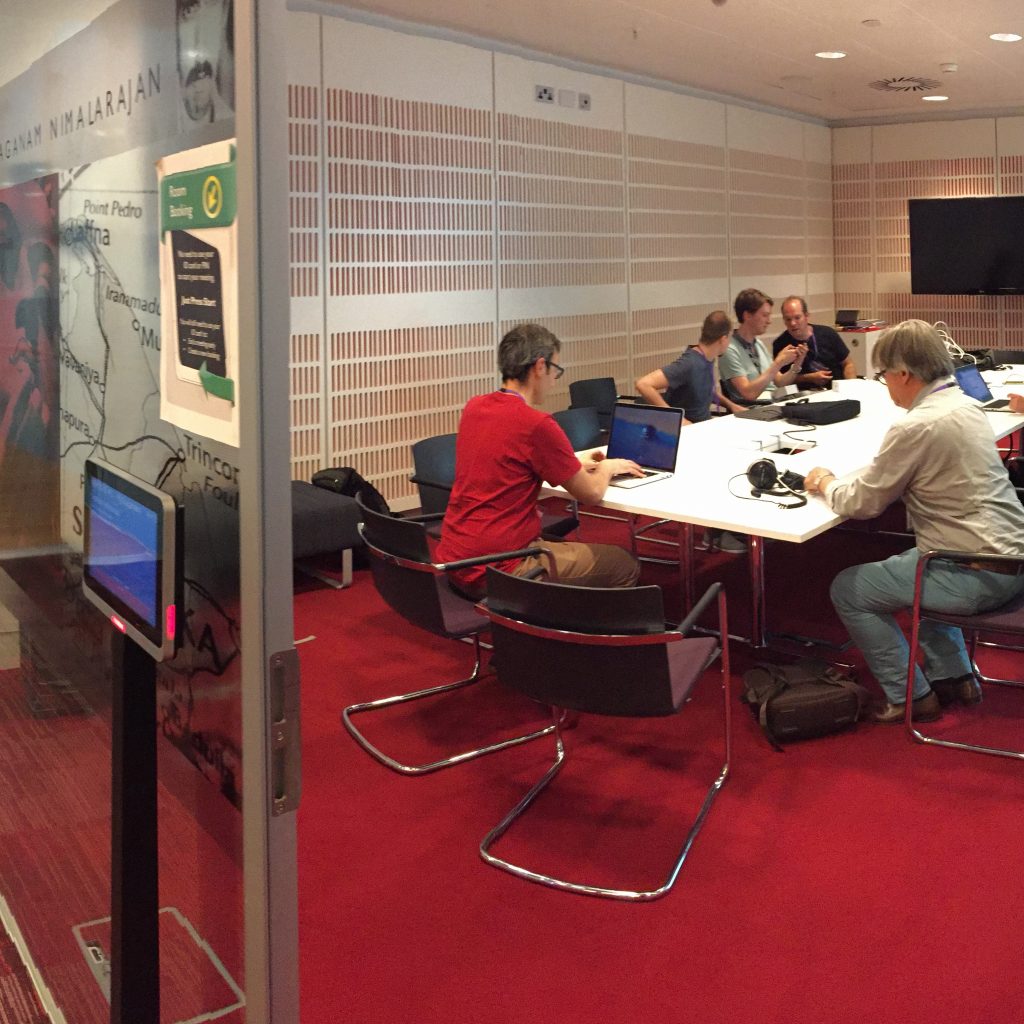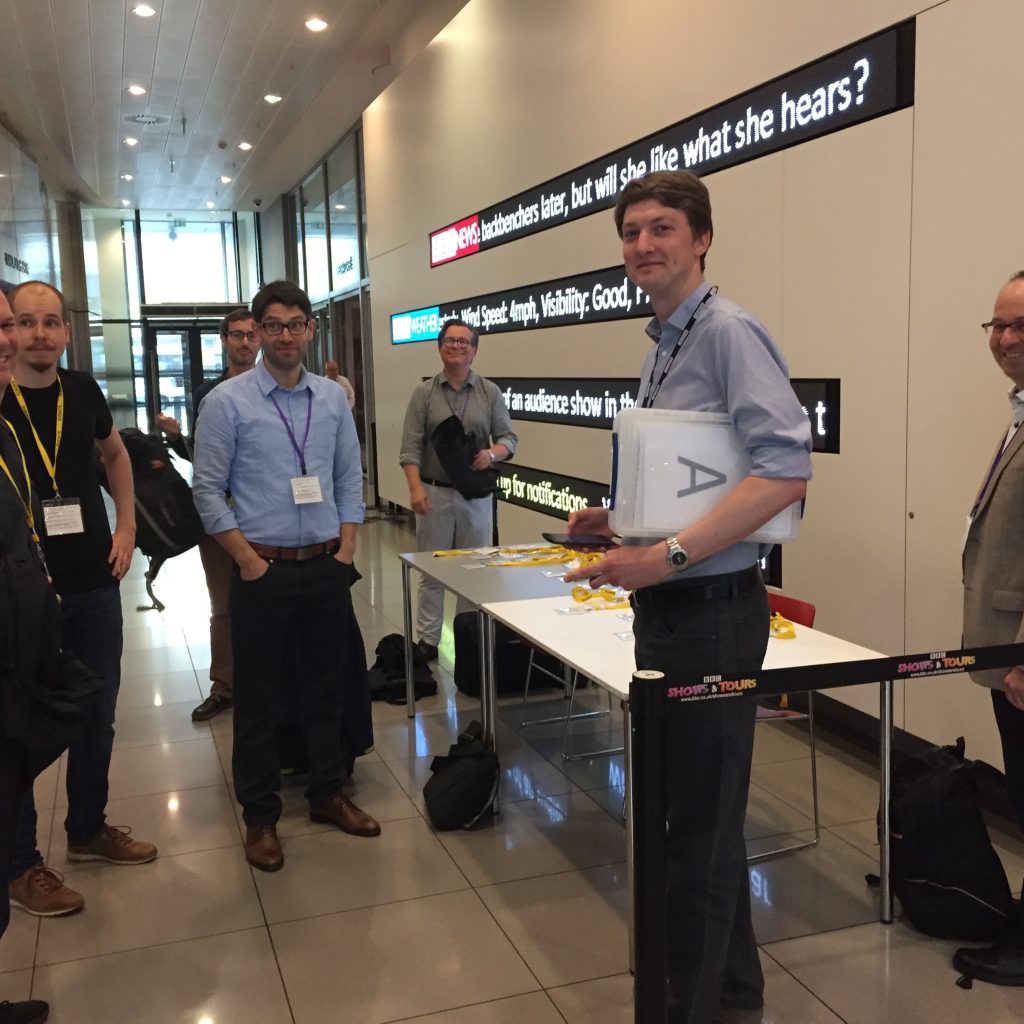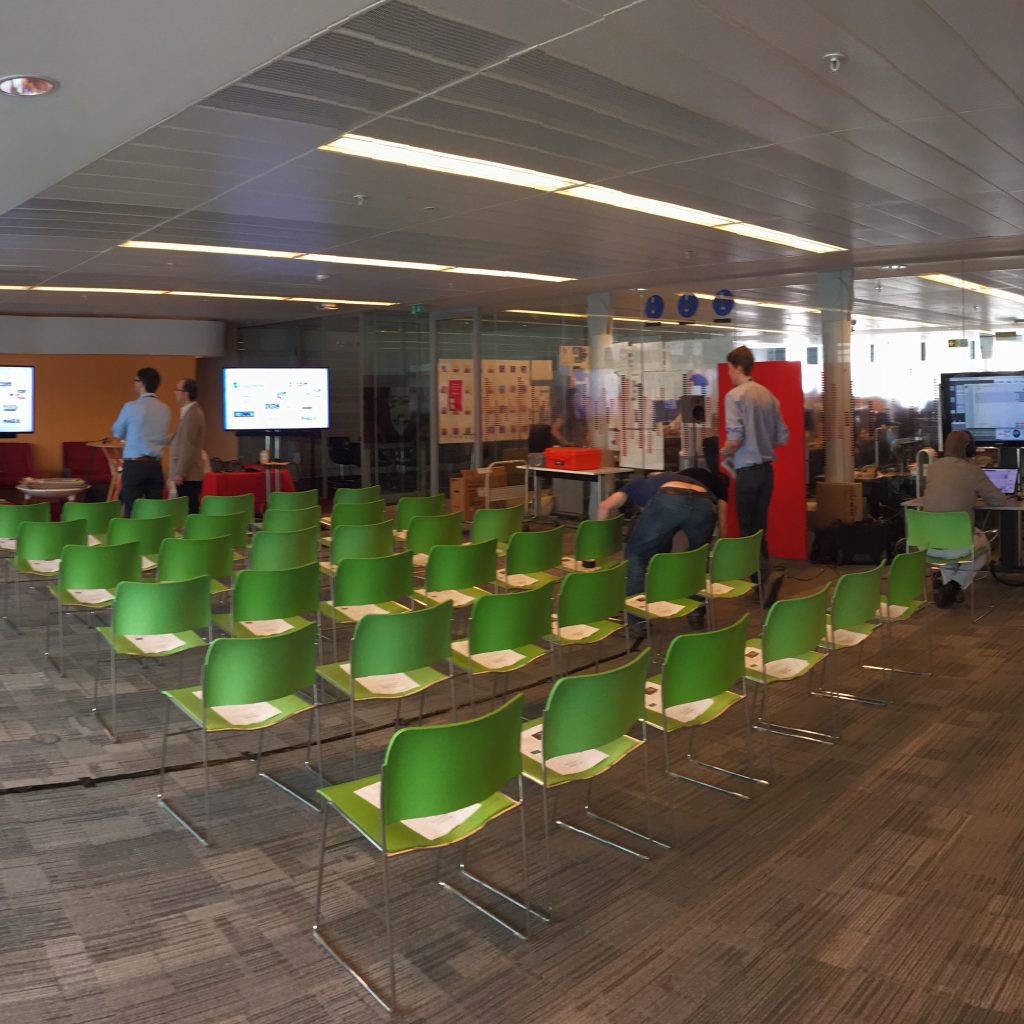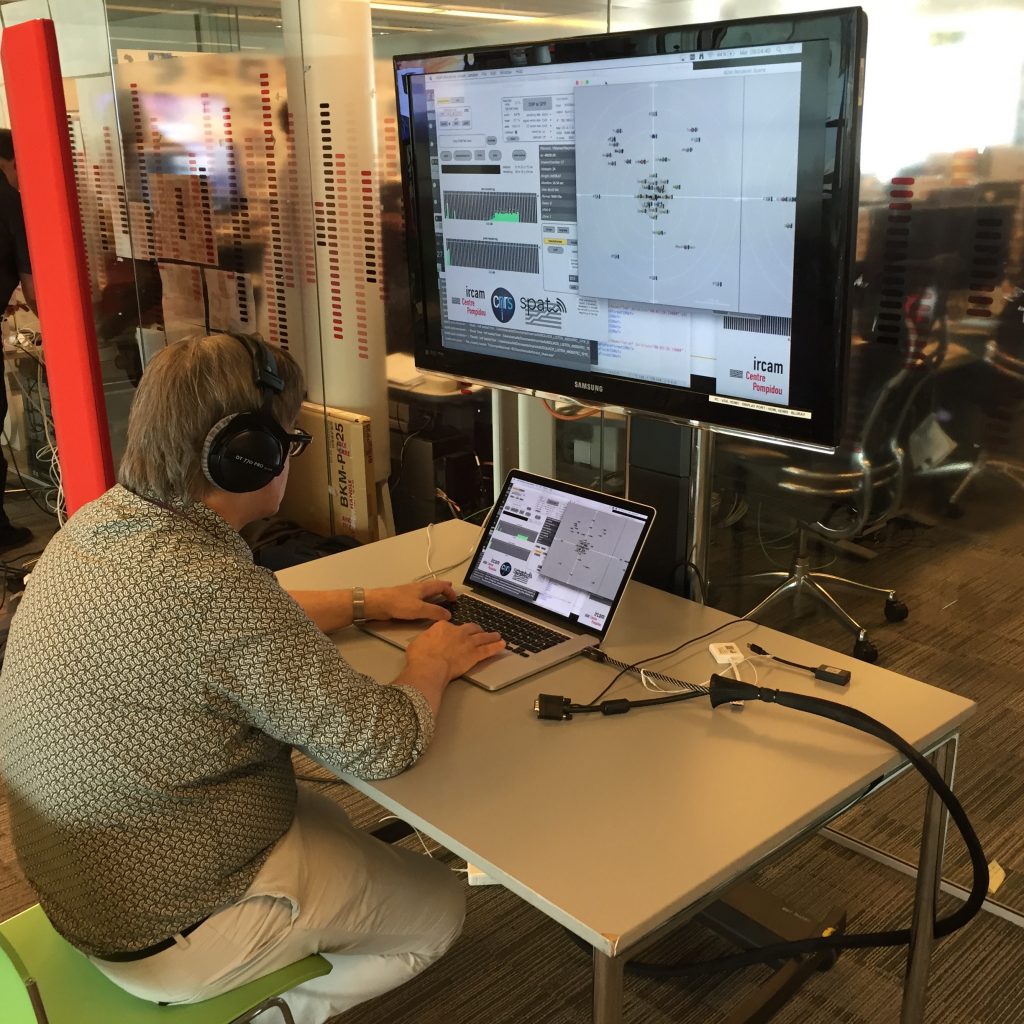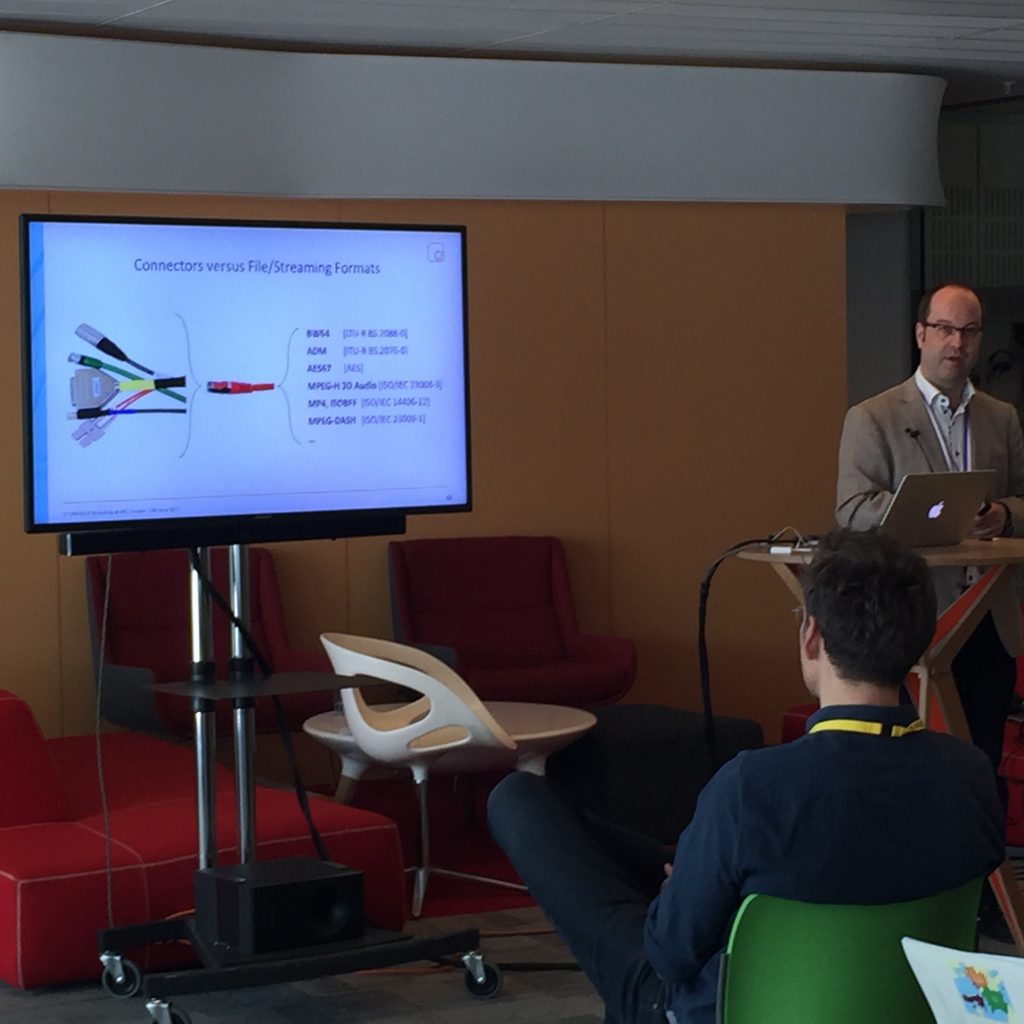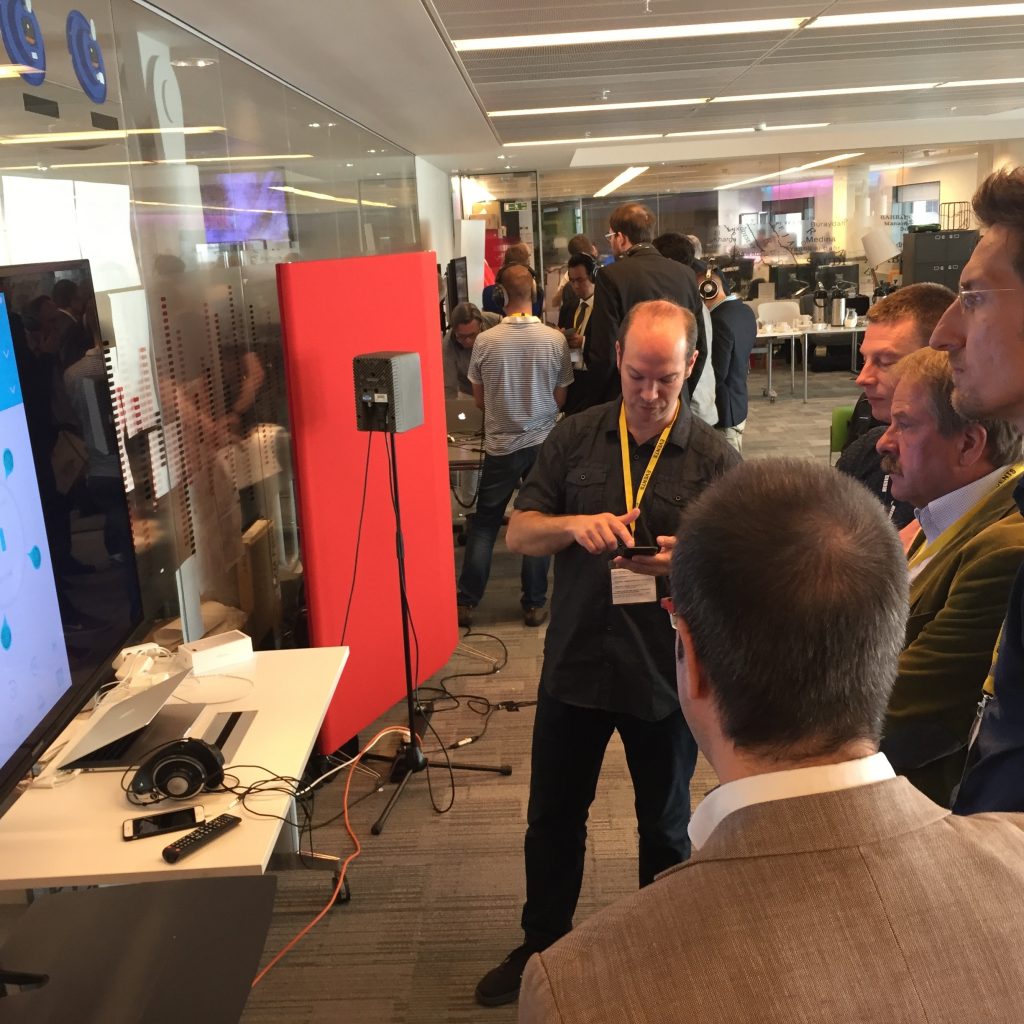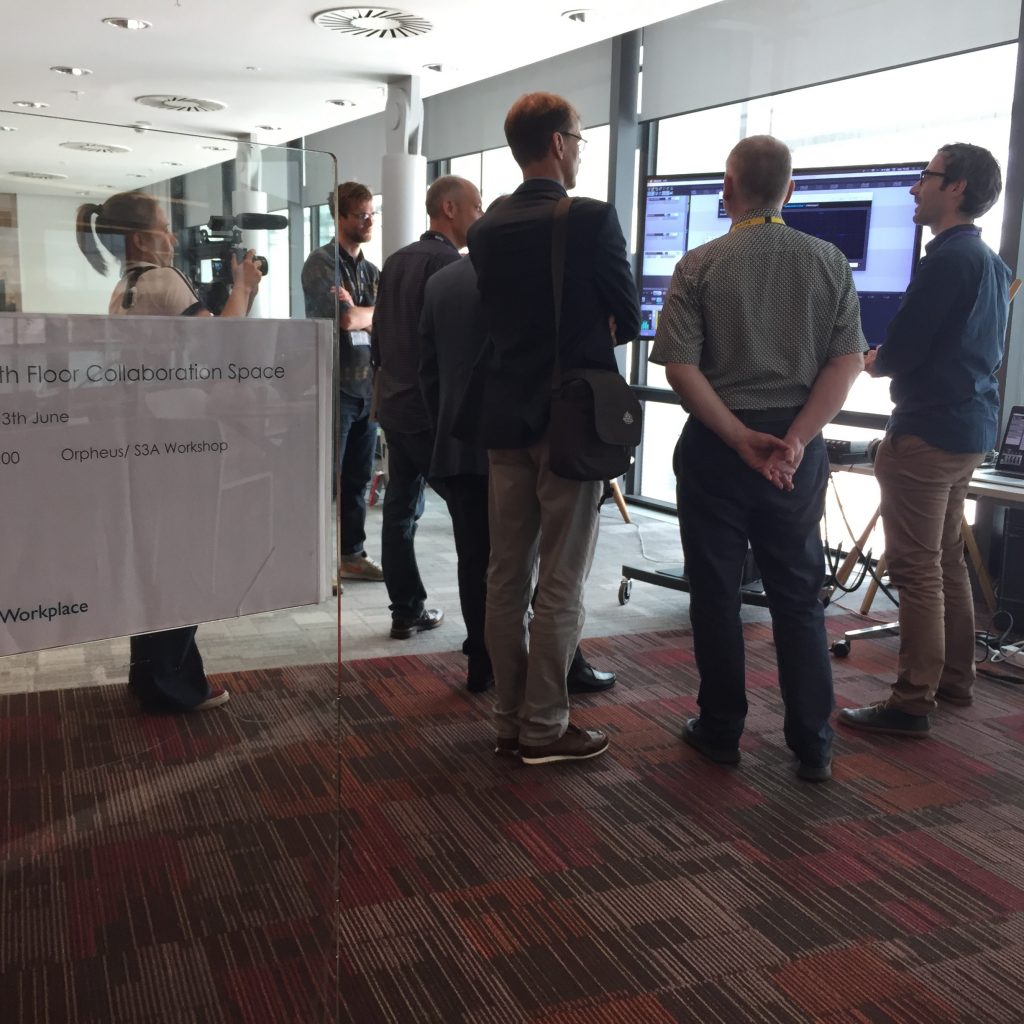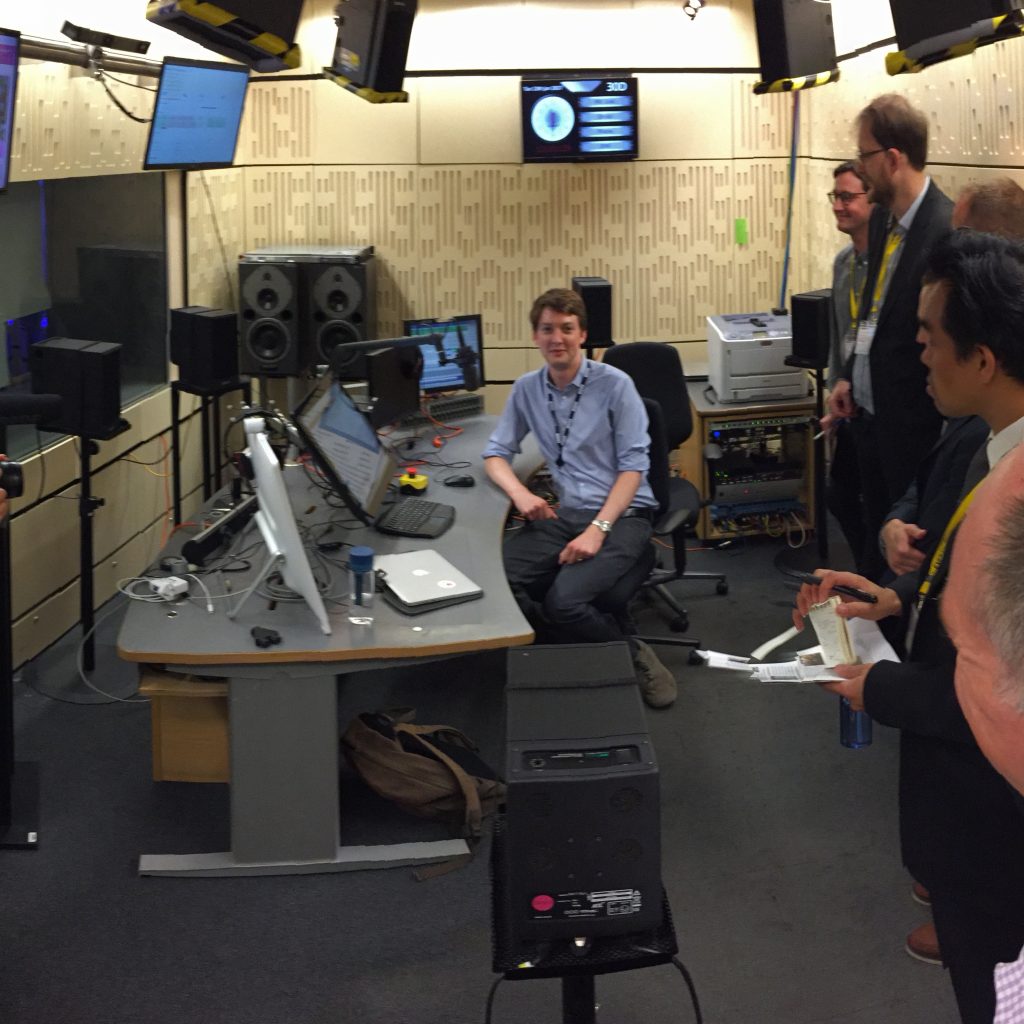
Mid-June was the hot phase of preparing ORPHEUS pilot 1, and we found it to be the right time for our first project workshop. BBC R&D kindly co-organised and hosted this one-day meeting at BBC’s impressive New Broadcasting House in London on 13 June 2017. We had invited a handpicked group of 30 participants, stakeholders and partners from the broadcasting industry, to give them an exclusive first view on our achievements so far.
The workshop concept was to deliver first a brief overview presentation from our technical leader Andreas Silzle (Fraunhofer IIS) on the project’s structure and objectives and then split up into 6 small groups for touring in parallel through six demo stations, each 30 minutes long. These 6 stations represented the whole end-to-end chain of ORPHEUS: capturing – editing & mixing – play-out – distribution and reception – showing in live demos the present stage of project achievements. In detail:
- Nicolas Epain from b<>com demonstrated their capturing and rendering tools for Higher Order Ambisonics.
- Olivier Warusfel from IRCAM presented their comprehensive suite of ADM tools for editing and spatial reverb generation.
- Marius Vopel showed the newly introduced ADM functionalities of MAGIX’s SEQUOIA DAW.
- Chris Roberts from BBC’s experimental radio studio presented off-the-shelf equipment.
- Chris Baume showed the project’s dedicated all-IP studio with implemented ORPHEUS developments.
- Niels Bogaards from Elephantcandy demonstrated the ORPHEUS radio app receiving MPEG-H streams, including rendering into different formats and offering specific object-based audio features.
To reflect on these achievements and to receive feedback, more than one hour was reserved for Q&A and open discussion with the participants.
Slides for download
Object-Based Broadcasting – For European Leadership in Next Generation Audio Experiences. Overview (PDF) – Andreas Silzle, Fraunhofer IIS, technical coordinator of ORPHEUS
Get more impressions on this thrilling event in this short film made by BBC R&D
and here in the gallery
- The ORPHEUS team welcomes you
- Nicolas Epain prepares the EIgenmike capturing demo by bcom
- Olivier Warusfel checks the mixing demo by IRCAM
- Andreas Silzle introducing our project
- Niels Bogaards shows the ORPHEUS App
- Simon Tuff and Chris Baume moderate the Q&A
- Thank you for beeing with us. See you again soon!

